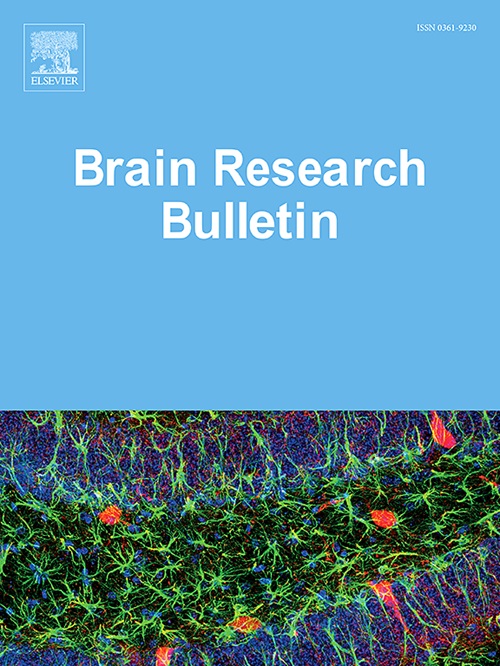Enriched environment improves memory function by promoting synaptic remodeling in vascular dementia rats
IF 3.5
3区 医学
Q2 NEUROSCIENCES
引用次数: 0
Abstract
Vascular dementia (VaD), attributed to cerebrovascular pathology, is a leading cause of cognitive decline, characterized by memory loss, bradyphrenia, and affective lability, with memory deficits being particularly pronounced. The potential of enriched environment (EE) to ameliorate cognitive impairments by enhancing hippocampal synaptic plasticity, neurogenesis, and white matter remodeling has garnered considerable interest. In this study, we used a rat model for VaD through the procedure of bilateral common carotid artery ligation (BCCAO). We randomly assigned male Sprague-Dawley (SD) rats to three groups: the control sham-operated group (Sham group), the surgery-induced dementia group (BCCAO group), and the surgery-induced dementia group with enriched environment (EE group). The Sham and BCCAO groups were kept under standard lab conditions, whereas the EE group was housed in an enriched setting. Employing a behavioral assay battery, we observed that EE intervention significantly improved the spatial learning and memory performance in the Morris water maze. Subsequent neuromorphological assessments utilizing transmission electron microscopy disclosed an increase in synaptic density and postsynaptic density (PSD) thickness within the hippocampal CA1 region, indicative of structural synaptic modulation. Further probing into the molecular underpinnings revealed that EE upregulated the expression of PSD95, corroborating its role in enhancing cognitive faculties. Additionally, our investigation into the PGC-1α/FNDC5/BDNF pathway demonstrated that EE intervention elevated the expression of these neurotrophic factors, suggesting a mechanistic link to synaptic and cognitive restoration. In summation, our findings elucidate the neurorestorative potential of EE in a preclinical VaD model, presenting a non-pharmacological intervention that modulates synaptic architecture and activates neuroprotective pathways. The observed correlations between synaptic remodeling and cognitive enhancement underscore the therapeutic relevance of EE in VaD, warranting further investigation for clinical applications.
求助全文
约1分钟内获得全文
求助全文
来源期刊

Brain Research Bulletin
医学-神经科学
CiteScore
6.90
自引率
2.60%
发文量
253
审稿时长
67 days
期刊介绍:
The Brain Research Bulletin (BRB) aims to publish novel work that advances our knowledge of molecular and cellular mechanisms that underlie neural network properties associated with behavior, cognition and other brain functions during neurodevelopment and in the adult. Although clinical research is out of the Journal''s scope, the BRB also aims to publish translation research that provides insight into biological mechanisms and processes associated with neurodegeneration mechanisms, neurological diseases and neuropsychiatric disorders. The Journal is especially interested in research using novel methodologies, such as optogenetics, multielectrode array recordings and life imaging in wild-type and genetically-modified animal models, with the goal to advance our understanding of how neurons, glia and networks function in vivo.
 求助内容:
求助内容: 应助结果提醒方式:
应助结果提醒方式:


